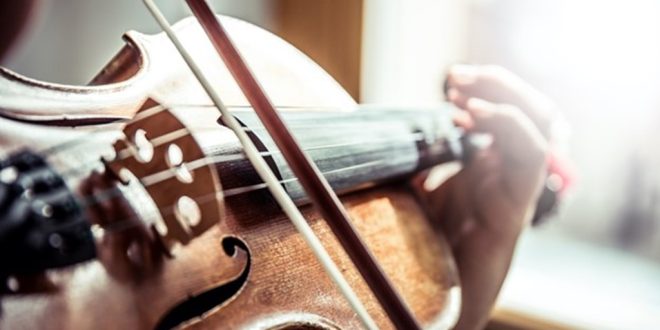Family heirlooms, especially musical instruments like violins, carry significant sentimental and historical value. These treasured pieces often pass down through generations, bringing memories and legacy along with them. However, as time passes, wear and tear can impact the playability of a violin. Whether the instrument has experienced physical damage, exposure to moisture, or simply accumulated aging effects, restoring it can breathe new life into the heirloom.
Violin maker restoration services play a crucial role in the process of restoring a family heirloom’s playability. Experts use their skill and knowledge to repair, adjust, and improve an instrument’s function while maintaining its historical authenticity. In this article, we will discuss the ways in which restoration can improve a family heirloom’s playability and ensure that it remains a functional and cherished piece for future generations.
Step 1: Addressing Structural Damage
Over time, violins, like all wooden instruments, are prone to structural damage. Common issues include cracks, splits, or warping that can affect the instrument’s performance. Whether caused by climate changes, accidental drops, or general aging, addressing structural issues is one of the first steps in restoring a family heirloom.
A skilled violin maker will carefully inspect the instrument for any cracks or signs of damage. Depending on the severity of the issue, repairs may involve gluing and reinforcing the cracked areas, replacing worn parts, or reshaping the instrument. These structural repairs are vital to maintaining the violin’s strength and ensuring that it produces clear, accurate tones when played. With the help of professional restoration services, these structural issues can be fixed, allowing the violin to return to its former glory and regain its playability.
Step 2: Restoring the Sound Post and Bridge
The sound post and bridge are integral components of a violin’s sound production. These elements help transmit the vibrations from the strings through the body of the violin, affecting its tone quality. Over time, the sound post can shift, or the bridge may become misaligned, both of which can drastically affect the violin’s sound.
During restoration, the violin maker will carefully reposition or replace the sound post and adjust the bridge to optimize the instrument’s acoustics. This is done with great precision, as even slight adjustments can make a significant difference in how the violin sounds. Restoring the sound post and bridge ensures that the violin continues to resonate beautifully and provides a smooth, responsive playing experience.
Step 3: Refining the Fingerboard and Neck
The neck and fingerboard of a violin are essential for comfort and playability. Over time, the fingerboard can wear down, become uneven, or develop grooves that make playing more difficult. The neck may also suffer from warping or other damage that impacts the player’s ability to position their fingers correctly.
Restoring the fingerboard involves sanding it down to ensure a smooth, level surface. In some cases, the fingerboard may need to be replaced if the damage is too extensive. Similarly, the neck may be adjusted or reshaped to provide optimal comfort and playability. These refinements ensure that the violin remains easy to play, allowing musicians to navigate the fingerboard with ease and precision.
Step 4: Restoring the Varnish and Aesthetics
A violin’s varnish does more than just give it an attractive appearance—it also plays a role in the instrument’s acoustics. Over time, the varnish can become worn or damaged, affecting the violin’s aesthetic appeal and possibly its tonal qualities. Restoring the varnish not only brings back the instrument’s beauty but can also improve its overall sound.
The restoration process involves carefully stripping away old, damaged varnish and applying a fresh layer of high-quality varnish. The new varnish is applied in thin layers, allowing each to dry before the next layer is added. This process restores the violin’s visual appeal while ensuring that the varnish is smooth, protective, and acoustically beneficial. In addition to varnish, any cosmetic damage such as scratches or dings is also addressed, giving the violin a refined look that complements its musical performance.
Step 5: Adjusting Playability Features
The overall playability of a violin is affected by several factors, including the position of the bridge, the height of the strings, and the tension of the pegs. A violin maker will fine-tune these elements during restoration to ensure that the instrument is comfortable and easy to play. The height of the strings is adjusted so that the violin’s action is optimal—neither too high nor too low, which can affect the ease of playing and the sound produced.
The pegs, which are used to tune the violin, are also examined and adjusted during restoration. Worn-out pegs can make tuning difficult and unstable. By restoring or replacing these components, the violin’s tuning stability is improved, ensuring that it holds its pitch well during play.
Conclusion:
Restoring a family heirloom violin involves much more than simply repairing damage; it also ensures that the instrument remains playable and retains its value for future generations. Violin maker restoration services not only restore the instrument’s physical condition but also ensure that it plays beautifully, just as it did when it was first crafted. Whether it’s repairing structural damage, adjusting the sound post and bridge, or refining the aesthetics, each step in the restoration process contributes to improving the violin’s playability.
By entrusting a family heirloom violin to a professional violin maker, you ensure that it will continue to be a functional, playable instrument while preserving its historical and sentimental value. Through restoration, the violin is not only returned to its former glory but is also made ready for continued use, allowing it to create beautiful music for years to come.
 Crypto trade Online Unlock the Future of Finance Today.
Crypto trade Online Unlock the Future of Finance Today.




